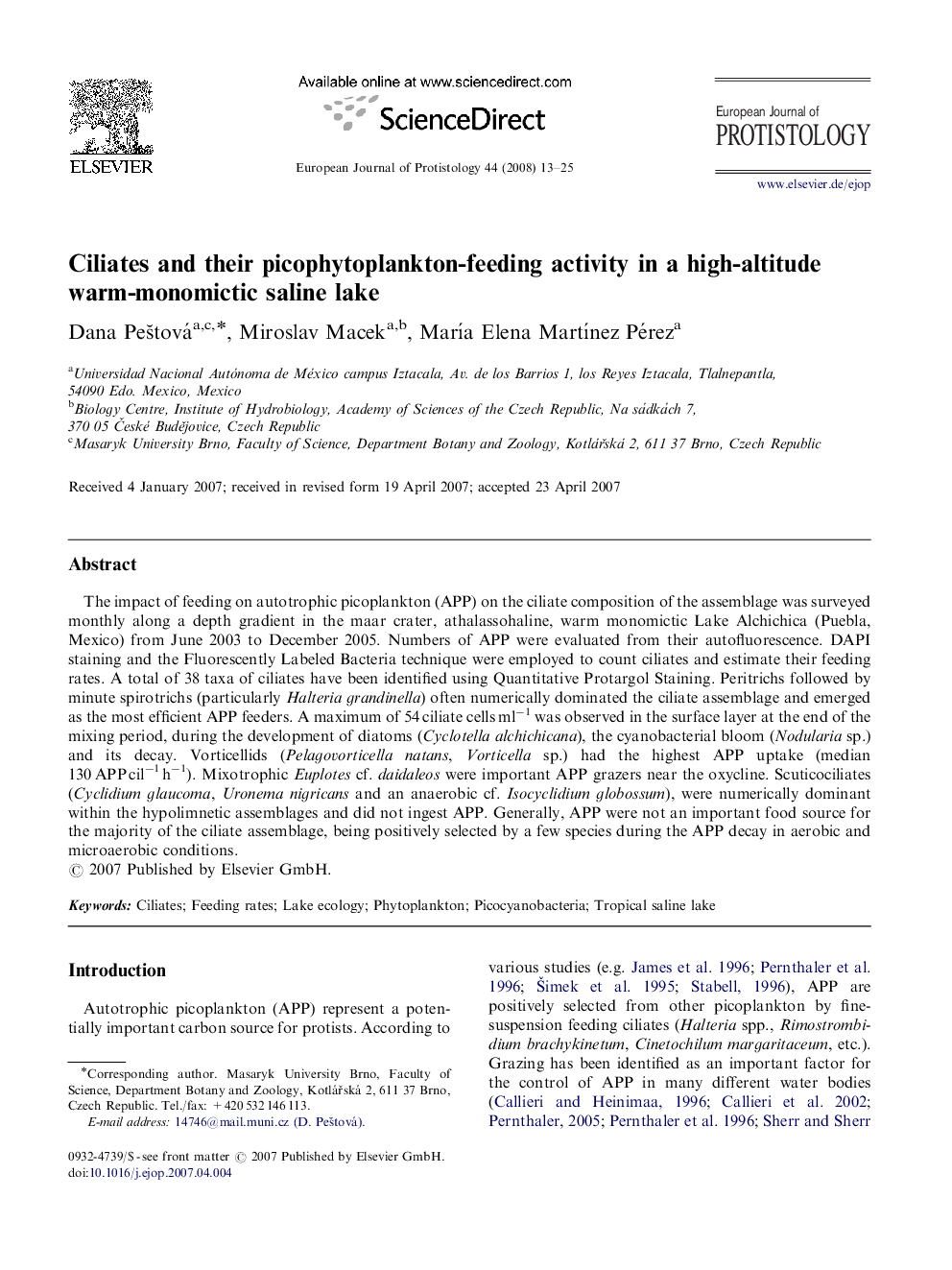| Article ID | Journal | Published Year | Pages | File Type |
|---|---|---|---|---|
| 2047092 | European Journal of Protistology | 2008 | 13 Pages |
The impact of feeding on autotrophic picoplankton (APP) on the ciliate composition of the assemblage was surveyed monthly along a depth gradient in the maar crater, athalassohaline, warm monomictic Lake Alchichica (Puebla, Mexico) from June 2003 to December 2005. Numbers of APP were evaluated from their autofluorescence. DAPI staining and the Fluorescently Labeled Bacteria technique were employed to count ciliates and estimate their feeding rates. A total of 38 taxa of ciliates have been identified using Quantitative Protargol Staining. Peritrichs followed by minute spirotrichs (particularly Halteria grandinella) often numerically dominated the ciliate assemblage and emerged as the most efficient APP feeders. A maximum of 54 ciliate cells ml−1 was observed in the surface layer at the end of the mixing period, during the development of diatoms (Cyclotella alchichicana), the cyanobacterial bloom (Nodularia sp.) and its decay. Vorticellids (Pelagovorticella natans, Vorticella sp.) had the highest APP uptake (median 130 APP cil−1 h−1). Mixotrophic Euplotes cf. daidaleos were important APP grazers near the oxycline. Scuticociliates (Cyclidium glaucoma, Uronema nigricans and an anaerobic cf. Isocyclidium globossum), were numerically dominant within the hypolimnetic assemblages and did not ingest APP. Generally, APP were not an important food source for the majority of the ciliate assemblage, being positively selected by a few species during the APP decay in aerobic and microaerobic conditions.
